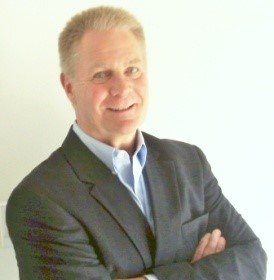Phil Faris: I had a friend that had the total knee done and didn’t like doing physical therapy or working out. So, she wasn’t very compliant with her exercise. As a result, it took her almost two years before she was fully up and around. A lot of it was because when the knee felt uncomfortable, she didn’t do any exercises or movement, and that made it worse. Can you explain why it’s important to do the physical therapy and achieve movement in the knee?
Richard Haynes: My goodness! That’s an excellent point to make because most orthopedic surgeons, not all of them, but most of them will tell you, “Hey, Phil, I did the easy part. I did the surgery. The tough part now is going to be on you and the physical therapist, the rehabilitation.” The important thing to remember is, after knee surgery, or any surgery in the body, but we’re talking about the knee today, your body begins an inflammation process immediately. This is part of the healing process. In that process, your knee or your body also begins to lay down scar tissue. In other words, it’s going to try to lay down and lock that knee up to heal it. It wants to keep movement to a minimum.
Your body wants to work against you. It’s trying to heal itself, but it’s not interested in you moving that knee. What we must do as therapists and what patients must understand before they have surgery is that this physical rehabilitation will make or break them for years to come if they do not get it done in those first six weeks. I give it a six-week window because you’ve got to get after that knee fast or it’s going to begin to lock itself down. Once it locks itself down, then you’re in trouble. The chances of us getting that knee to bend properly again are slim and, sometimes, none. You’ve got to have a mental mindset that you’re going to get in there and get that knee done, and that should be explained to the patient before surgery.
A lot of times, that’s not a problem because this is an elective surgery, to begin with, so most patients know going in what they’ve got to do. But some patients, like the young lady you spoke with earlier, they get home, and they do not realize just how much pain it takes. They must understand you’ve got to get in there and bend that knee quickly because, if not, it’s going to affect your ability to walk properly in the future.
Phil Faris: In your practice, you emphasize the mental aspect of recovery quite a bit. Why is the mental training important for your patients?
Richard Haynes: I’m a big proponent of mental fitness, as well as physical fitness. I can teach anybody to lift a barbell up or do an exercise, but our recovery, whether it’s in physical rehabilitation after total knee surgery or whether it’s building muscle and getting fitter, it all starts in our mind. As a patient, we must learn that concept and, fortunately, it can be learned.
There’s a big buzzword today. You’ve heard the term, ‘mental toughness.’ People need to develop a mental toughness before going into this type of surgery or getting their body stronger. They must be committed and disciplined enough to go through the trials and tribulations of the rehabilitation process, day in and day out, especially on those days when they do not feel like working; you’ve got to get it done. It’s the same with our fitness. There’s a lot of days you don’t want to exercise or do something, but you’ve got to work through those. You’ve got to listen to your body and get that work done.
Your mind and body work together, and the mind should be the boss. In other words, the body doesn’t control the body. The mind controls the body, so it all starts upstairs in our self-talk. We’ve got to be positive. We’ve got to be determined. We’ve got to get it done and have a focus, a mental focus, and clarity, of what we’re trying to do as far as getting our knee back into shape again after knee surgery or getting stronger as far as fitness is concerned.
Phil Faris: Can you give me an example of how you work with your patients incorporating both the mental and the physical aspect of rehabilitation?
Richard Haynes: The important thing is, especially in physical therapy, a lot of times we’ll go in there and set out goals. I find that, over the years, some therapists won’t even discuss these goals with the patient, but I like to find out what that patient’s goals are, whether they want to get back to golfing, gardening, bowling, biking, whatever it might be, lifting weights like myself. Then, we work towards that. We put that picture in front of them, that mental picture that says, “This is what we’ve got to do to get to that point.” Of course, each visit that I see them, we’re taking measurements, seeing how things are going, and discussing the plan of care with them.
We set out on paper a plan of care concerning what they’re going to do, with the patient being involved. A lot of times, physical therapists will go into a home and set goals for a patient. If I go and follow up, and the patient has no idea what they’re working towards, that’s not going to help with exercise compliance. The goal must come from within. The motivation must be internal. It cannot be external. You cannot be doing this because ‘my wife wanted me to get it done’ or for ‘my husband or my boyfriend down the street.’

